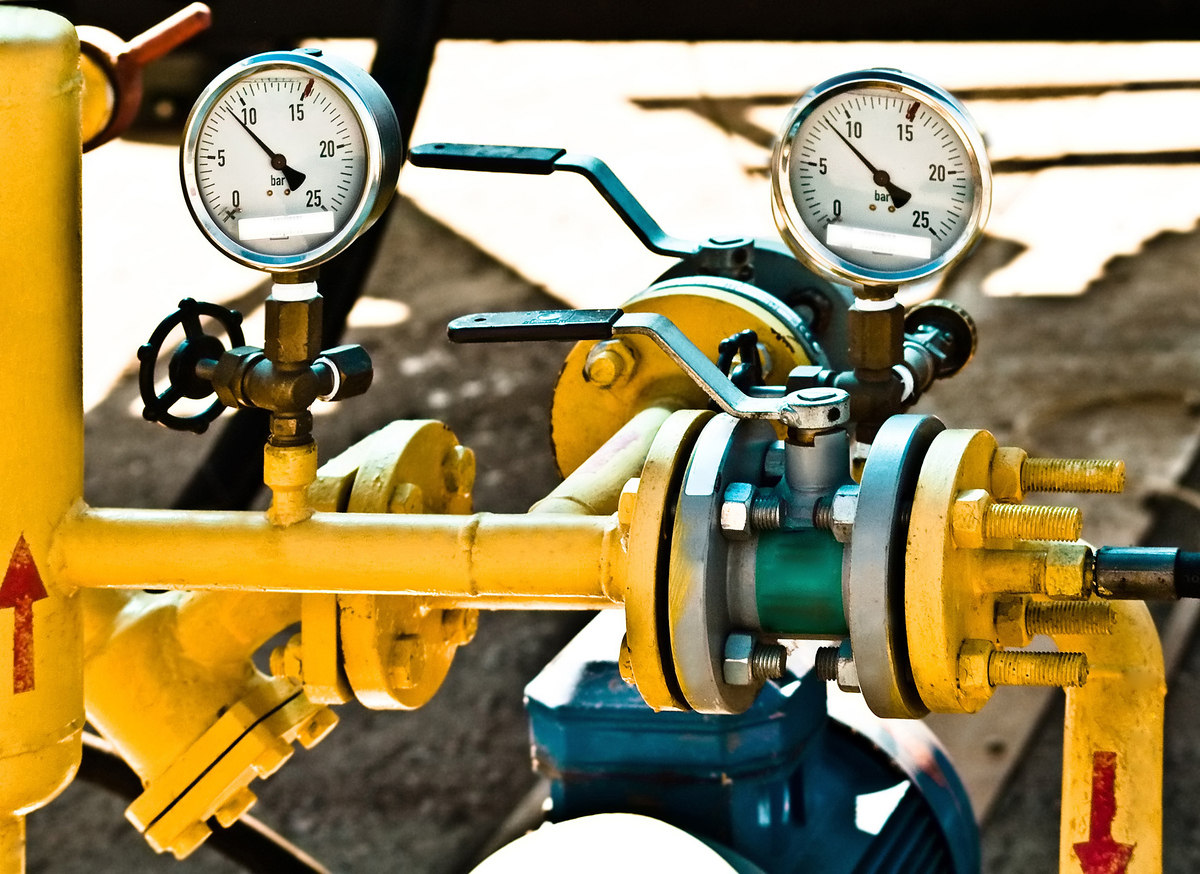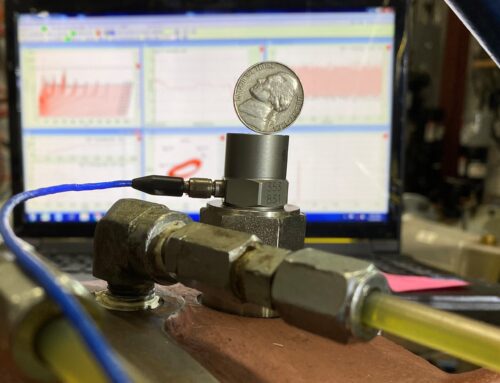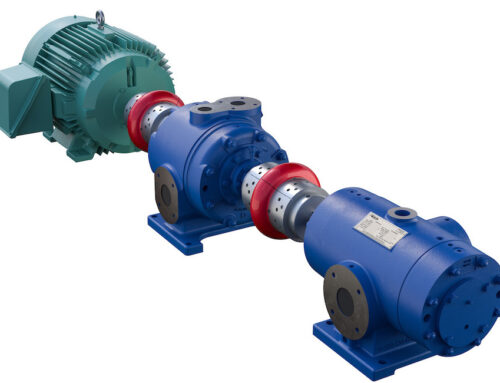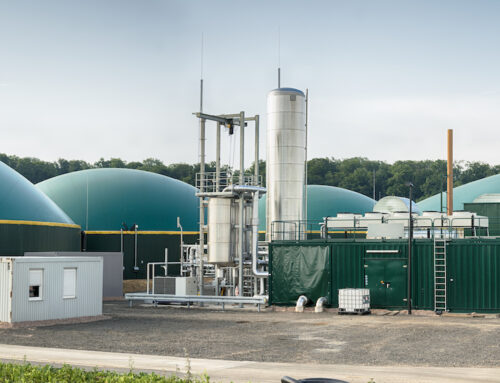Gas compressors used in various industries, from oil and gas tank vapor control to biogas methane capture, require capacity control to handle the variability in gas production. This article will provide a brief overview on methods of controlling positive displacement compressor capacity.
What is a Positive Displacement Compressor?
A positive displacement compressor is a compressor in which there is a physical reduction in the volume of gas to increase the gas pressure. Examples of positive displacement compressors include reciprocating compressors, screw compressors, diaphragm compressors, or sliding vane compressors.
By contrast, dynamic compressors impart velocity to the gas, which is then converted to pressure through a diffuser. Examples of these types of compressors include centrifugal compressors (both axial centrifugal compressors and radial centrifugal compressors) and ejectors.
Why is Compressor Capacity Control Required?
Compressors frequently have to handle gas streams with changing flow rates, either due to gas production variation or gas consumption changes. Examples of gas production variation are the changes in ambient temperature of an oil tank due to heating during the day or different feedstock entering a digester causing a different gas production rate. One example where a different gas flow rate is required is a gas compressor that is boosting gas pressure for a gas engine generating electric power. As electric power demand decreases (off-peak hours) the required fuel rate of the engine is reduced, reducing the need for flow rate from the gas compressor.
Methods of Gas Compressor Control
Different options exist for controlling gas compressor capacity. The items below will discuss common methods for controlling positive displacement gas compressor capacity. Specific compressor technologies have additional methods of capacity control, but they are outside the scope of this discussion.
Compressor Start/Stop Capacity Control
Compressor start/stop control is one of the oldest methods of controlling gas compressor flow rate. This method is commonly used in situations where gas can be stored in some type of accumulation system and/or gas pressure can be allowed to increase to a certain value before the gas compressor starts drawing the pressure down to a predetermined value. Once the specified gas low-pressure value is reached the gas compressor is shut off.
This method can be used in systems that can tolerate varying pressures upstream of the compressor. However, if upstream pressure must be controlled in a narrow operating band it is typically better for the gas compression system to vary its capacity by one or more of the following methods.
Compressor Operating Speed to Control Compressor Capacity
One of the most frequently used methods of gas compressor capacity control is direct control of compressor operating speed. Direct compressor speed control can be used with both electric drive and gas engine drive compressors. Electric drive compressors can use a variable frequency drive (VFD)/variable speed drive (VSD) for directly controlling compressor operating speed. A VFD changes motor speed by adjusting the frequency of power supplied to the motor from the base electrical signal (60 Hz in North America). Gas engine drives can directly vary their operating speed with throttle adjustments (typically controlled by the engine management system). Most compressors have minimum and maximum operating speeds, which may or may not be the same as the driver. Limits should be applied in the drive controller (either gas engine or electric) to limit the allowed speeds to the minimum and maximum operating speed of the compressor.
Speed control is typically the most efficient method of controlling compressor capacity. The disadvantage of this method is that if the minimum required flow rate of the process is less than the flow rate produced by the minimum operating speed of the compressor one of the other capacity control methods will have to be used in conjunction with this method.
Click to see how operating speed changes capacity with our visual chart.
Gas Recycle to Control Compressor Capacity/Flow Rate
Once a gas compressor has reached its minimum operating speed the second most common method for controlling compressor capacity is the use of a gas recycle loop. This method takes gas from the discharge side of the compressor and allows some (or all) of the gas to return to the compressor inlet. This method can allow for a net flow rate from the compressor package to reach 0 ACFM. For this method to work successfully the gas should be taken from downstream of the aftercooler and returned to the suction separator. If the gas is not cooled, the compressor could recycle hot gas continually increasing the operating temperature of the compressor until the compressor shuts down due to reaching a maximum operating temperature. If the gas is cooled, there is potential for liquids to form in the process stream. These liquids must be removed prior to the compressor inlet to prevent damage to the compressor. This is why the gas must be returned to the inlet separator.
This method is less efficient than direct compressor speed control, as work is being put into the gas that is not leaving the gas compression skid. However, this method may be a more cost-effective solution for small, low power gas compression systems versus the cost of adding a variable frequency drive (VFD).
Suction Throttling to Control Compressor Capacity
Another method to control gas compressor capacity is to artificially restrict the gas inlet stream to reduce the amount of mass flow the gas compressor is able to achieve. This method typically uses an active control system to control the position of a throttling valve. This method is an acceptable means of compressor capacity control, but is typically the least efficient of the options available. The benefit suction throttling offers is that it is simpler to implement than a gas recycle system. The disadvantage is that the compressor capacity flow rate cannot be reduced to 0 ACFM, as damage would likely occur to the compressor.
Learn More With Ro-Flo Compressors
All of the above methods are effective methods to control the capacity of your Ro-Flo sliding vane compressor. Each method of compressor capacity control has advantages and disadvantages that should be considered during system design. The goal is to cost-effectively implement a system with sufficient flexibility to handle process variation and provide operational reliability. Please contact Ro-Flo Compressor’s application engineering team to discuss the most effective means of capacity control for your compressor application.




